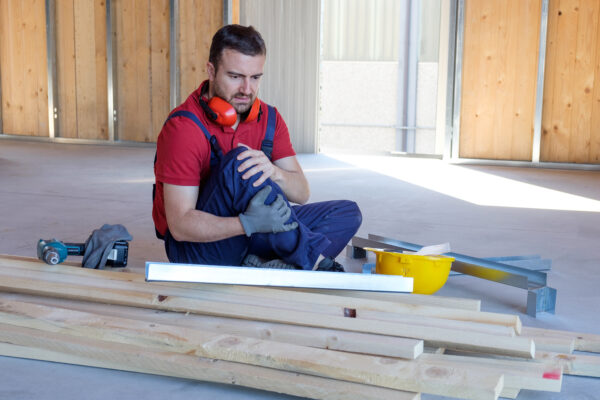Construction sites can be dangerous environments, with countless hazards that workers face daily. Among the many risks, falling objects pose a significant threat to workers’ safety. In the state of Texas, construction companies and employers have a legal and moral responsibility to ensure the protection of their workers from such hazards. This article discusses the requirements and best practices for safeguarding workers from falling objects in Texas construction, emphasizing the importance of compliance with safety regulations and the role of Chavez Law Firm in advocating for workers’ rights.
Understanding the Risks
Falling objects, such as tools, equipment, and construction materials, can cause serious injuries or fatalities if they strike a worker below. These incidents are often preventable with the implementation of proper safety measures and the use of necessary protective gear. To address these hazards effectively, both employers and workers must be aware of the risks and diligently adhere to safety protocols.
Texas Requirements for Protecting Workers
The state of Texas has established specific safety requirements to protect workers from falling objects on construction sites. These requirements are primarily governed by the Occupational Safety and Health Administration (OSHA) and the Texas Department of Insurance (TDI). Here are some essential guidelines and regulations to adhere to:
- Personal Protective Equipment (PPE): Employers must provide workers with appropriate personal protective equipment, including hard hats and safety helmets, to safeguard against head injuries resulting from falling objects.
- Secure Tool Storage: Tools and equipment should be stored securely when not in use, reducing the likelihood of accidental drops. Tool belts or pouches are essential for preventing objects from falling while workers are at heights.
- Guardrails and Toe-boards: Elevated work areas must have guardrails and toe-boards installed to prevent objects from falling over the edge.
- Safety Nets and Catch Platforms: Safety nets or catch platforms should be installed when feasible to catch falling objects before they reach the ground.
- Clear Work Zones: Workers should clear the area beneath elevated workspaces to ensure that any falling objects do not strike fellow workers or bystanders.
- Regular Inspections: Regular inspections of tools, equipment, and safety measures are necessary to identify and rectify potential hazards promptly.
Best Practices for Construction Companies and Workers
Compliance with safety regulations is paramount, but proactive safety practices can go a long way in protecting workers from falling objects. Here are some best practices for construction companies and workers to enhance safety:
- Comprehensive Safety Training: Employers must provide comprehensive safety training to all workers, educating them about potential falling object hazards and the proper use of protective equipment.
- Risk Assessments: Conducting regular risk assessments allows employers to identify potential hazards and implement appropriate control measures.
- Safety Signage: Clearly mark hazardous areas with safety signage, reminding workers to wear their PPE and exercise caution.
- Encourage Reporting: Foster a culture of open communication where workers feel comfortable reporting potential safety issues without fear of retaliation.
- Regular Equipment Maintenance: Keep tools and equipment in good working condition through regular maintenance and inspection.
- Supervision and Monitoring: Ensure that supervisors closely monitor worksites to ensure compliance with safety protocols.
Ensuring a Safer Future
As we move forward, it is crucial for all stakeholders in the construction industry to continue emphasizing safety as a top priority. While accidents cannot always be completely eliminated, proactive measures can significantly reduce their occurrence and mitigate their severity. Here are some additional steps that can be taken to ensure a safer future for construction workers in Texas:
- Investing in Technology: Embrace technological advancements, such as drones and remote monitoring systems, to inspect and assess hazardous areas without putting workers at risk.
- Regular Safety Meetings: Conduct regular safety meetings and toolbox talks to reinforce safety protocols and address any concerns or questions raised by workers.
- Encourage Near-Miss Reporting: Encourage the reporting of near-miss incidents, as they provide valuable insights into potential hazards that can be addressed proactively.
- Collaboration with Regulatory Authorities: Construction companies and employers should work closely with regulatory authorities to stay up-to-date with the latest safety guidelines and compliance requirements.
- Promote Safety Awareness: Host safety campaigns and workshops to raise awareness among workers about the importance of adhering to safety procedures.
- Implementing Behavioral-Based Safety Programs: Foster a culture of safety by implementing behavioral-based safety programs that incentivize and reward safe practices.
- Continuous Training and Education: Provide ongoing safety training and education to workers and supervisors to ensure they are well informed about the latest safety measures and industry best practices.
- Use of Safety Incentives: Consider implementing safety incentive programs to motivate workers to actively participate in creating a safer work environment.
Protecting workers from falling objects is a shared responsibility between construction companies, employers, and workers. Compliance with Texas safety requirements and the adoption of best practices can significantly reduce the risk of accidents and injuries. At Chavez Law Firm, we are dedicated to helping injured workers and ensuring they receive the justice and compensation they deserve.
If you or someone you know has been injured in a falling object incident, don’t hesitate to contact Chavez Law Firm today. Let us be your trusted legal advocate during this challenging time. Together, we can work towards a safer and more secure future for Texas construction workers.
